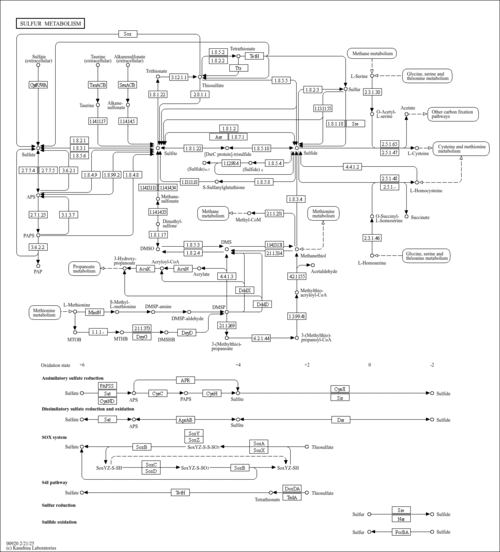Phenol


Specifications


Library
Name
Phenol
CAS
108-95-2
Identifier
HMDB0000228(view in HMDB)
Synonyms
Acide carbolique
Anbesol
Benzenol
Benzophenol
Campho-phenique cold sore gel
Campho-phenique gel
Campho-phenique liquid
Carbolic acid
Carbolic acid liquid
Carbolic oil
Carbolicum acidum
Carbolsaure
Cepastat lozenges
Cuticura pain relieving ointment
Fenol
Fenolo
Fenosmolin
Fenosmoline
Hydroxy-benzene
Hydroxybenzene
IPH
IZAL
Liquefied phenol
Liquid phenol
Liquified phenol
Monohydroxy benzene
Monohydroxybenzene
Monophenol
Oxybenzene
PHOH
Paoscle
Phenic
Phenic acid
Phenic alcohol
Phenol
Phenol alcohol
Phenol homopolymer
Phenol liquid
Phenol molten
Phenol polymer-bound
Phenol solution
Phenol synthetic
Phenolated water
Phenolated water for disinfection
Phenole
Phenosmolin
Phenylic acid
Phenylic alcohol
Synthetic phenol
Tea polyphenol
Molecular Formula
C6H5OH
Average Molecular Weight
94.11
Monoisotopic Mass of Parent Ion
94.0419
Purity
99%
Verified Purity
>99.99
Solubility
H2O: 8.3 g/100 mL
MSDS
Concentration Calculator


Find the volume
mg
g/mol
mM
Find the weight
mM
g/mol
mL
Find the concentration
g/mol
mL
mg
Concentration Converter


g/mol
Solubility Guide


%
100
80
60
40
20
0
Chloroform
MeOH
0
20
40
60
80
100
%
%
100
80
60
40
20
0
H2O
MeOH
0
20
40
60
80
100
%
%
100
80
60
40
20
0
H2O
DMSO
0
20
40
60
80
100
%
9
8
7
6
5
4
3
H2O (pH)
The Human Metabolome Database (HMDB)


Version
5.0
Status
Detected but not Quantified
HMDB Name
Phenol
SMILES
OC1=CC=CC=C1
Description
Phenol, is a toxic, colourless crystalline solid with a sweet tarry odor that resembles a hospital smell. It is commonly used as an antiseptic and disinfectant. It is active against a wide range of micro-organisms including some fungi and viruses, but is only slowly effective against spores. It has been used to disinfect skin and to relieve itching. Phenol is also used in the preparation of cosmetics including sunscreens, hair dyes, and skin lightening preparations. It is also used in the production of drugs (it is the starting material in the industrial production of aspirin), weedkillers, and synthetic resins. Phenol can be found in areas with high levels of motor traffic, therefore, people living in crowded urban areas are frequently exposed to traffic-derived phenol vapor. The average (mean +/- SD) phenol concentration in urine among normal individuals living in urban areas is 7.4 +/- 2.2 mg/g of creatinine. Exposure of the skin to concentrated phenol solutions causes chemical burns which may be severe; in laboratories where it is used, it is usually recommended that polyethylene glycol solution is kept available for washing off splashes. Notwithstanding the effects of concentrated solutions, it is also used in cosmetic surgery as an exfoliant, to remove layers of dead skin (Wikipedia). In some bacteria phenol can be directly synthesized from tyrosine via the enzyme tyrosine phenol-lyase [EC:4.1.99.2]. It can be produced by Escherichia and Pseudomonas. Phenol has been identified as a uremic toxin according to the European Uremic Toxin Working Group (PMID: 22626821).
Physical Properties


State
Solid
Experimental Properties


Property
Value
Reference
Melting Point
40.9 °C
N/A
Boiling Point
N/A
N/A
Water Solubility
82.8 mg/mL at 25 °C
N/A
LogP
1.46
HANSCH,C ET AL. (1995)
Biological Properties


Cellular Locations
N/A
Biospecimen Locations
Blood
Feces
Saliva
Sweat
Urine
Tissue Locations
Adipose Tissue
Bladder
Brain
Epidermis
Fibroblasts
Intestine
Liver
Neuron
Platelet
Skeletal Muscle
Spleen
Testis
Thyroid Gland
Normal Concentrations


Biospecimen
Status
Value
Age
Sex
Condition
Reference
Details
Urine
Detected and Quantified
2.7 (0.4-53.0) umol/mmol creatinine
Children (1-13 years old)
Both
Normal
Urine
Detected and Quantified
2.2 (1.0-6.7) umol/mmol creatinine
Children (1-13 years old)
Both
Normal
Urine
Detected and Quantified
2.2 (0.7-8.5) umol/mmol creatinine
Adolescent (13-18 years old)
Both
Normal
Urine
Detected and Quantified
7.0 (5.6-9.2) umol/mmol creatinine
Adult (>18 years old)
Both
Normal
Urine
Detected and Quantified
4.8 (0.6-12.8) umol/mmol creatinine
Adult (>18 years old)
Both
Normal
Abnormal Concentrations


Biospecimen
Status
Value
Age
Sex
Condition
Reference
Details
No abnormal concentrations found.
Spectra


Predicted GC-MS
splash10-0006-9000000000-c35c89484e2499c62a49
Predicted GC-MS
splash10-0g4i-9300000000-afd565a878ea36c74def
Predicted LC-MS/MS
splash10-0002-9000000000-2c7201e803e029dd1aef
Predicted LC-MS/MS
splash10-0002-9000000000-3fb3990dfbfbde2b8d57
Predicted LC-MS/MS
splash10-0gba-9000000000-d3da8db6579f32d02c6c
Predicted LC-MS/MS
splash10-0006-9000000000-a74494cda18ab9fb8055
Predicted LC-MS/MS
splash10-0006-9000000000-a74494cda18ab9fb8055
Predicted LC-MS/MS
splash10-0006-9000000000-03a61ff7da92cb08edf8
Predicted LC-MS/MS
splash10-0002-9000000000-c65d4a4eaa8adde2ddb4
Predicted LC-MS/MS
splash10-014j-9000000000-def7a8d52afb63a3cd67
Predicted LC-MS/MS
splash10-0udi-9000000000-f3c795ffc788635ddbf4
Predicted LC-MS/MS
splash10-0006-9000000000-08485aaf085c13d5129a
Predicted LC-MS/MS
splash10-0006-9000000000-08485aaf085c13d5129a
Predicted LC-MS/MS
splash10-0006-9000000000-52b0f93832ef13f17bd2
Pathways


Name
SMPDB/Pathwhiz
KEGG
Sulfite oxidase deficiency
